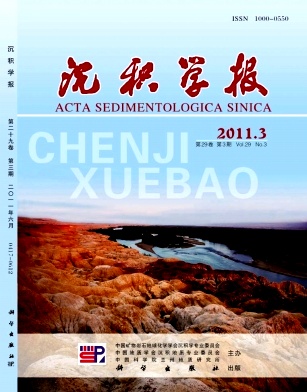Microfacies of Peloidal Limestone of Middle Permian Chihsia Formation at Guangyuan, Sichuan Province and Its Sedimentary Significance
- Received Date: 1900-01-01
- Rev Recd Date: 1900-01-01
- Publish Date: 2011-06-10
-
Key words:
- peloid /
- depositional environment /
- Guangyuan /
- Chihsia Formation
Abstract: Carbonate shoal develops in the middle part of Chihsia Formation at Shangsi Section of Guangyuan, Sichuan Province. The outcrop consists predominantly of thick bedded to massive limestone with intercalated dolostone. The rocks are light grey and crystalline, with some fossil fragments. Under microscope,abundant peloids and cortoids were identified. The peloids are classified into three types: fecal pellets, bahamite peloids and microbial peloids. The bahamite peloids are the most common grains observed. They are micritized bioclasts in origin, mainly including red algae, benthic foraminifera, crinoid and minor other shallow water organisms. Fossils are wellpreserved in some layers. In light of particle composition and preservation, these particles derived from organic hardparts within carbonate platform, and accumulated insitu, at least without major transportation. Intergranular porosities and organic cavities are filled mainly with sparry calcite cement with minor carbonate mud. Such a dominant sparry calcite cementation texture indicates the water energy was not strong enough to winnow off all the mud. Consequently, the peloidal shoal develops in relatively lowmedium energy environment. Microfacies types are is grouped into peloid packstonegrainstone,peloidcortoid grainstone,foraminiferaalgae packstone and bioclast wackstone. Based on grain type, sedimentary fabric and microfacies analysis, the peloidal shoal can be subdivided into shoal, shoal fringe and intershoal. In addition, such a peloidal shoal is widespread in the Permian strata of South China. Recognition of such a shoal and further study on its grain composition, depositional environment and spatial distribution will be of great significance on the understanding of Permian palaeogeographic framework of South China.
| Citation: | MA Zhixin. Microfacies of Peloidal Limestone of Middle Permian Chihsia Formation at Guangyuan, Sichuan Province and Its Sedimentary Significance[J]. Acta Sedimentologica Sinica, 2011, 29(3): 449-457. |






 DownLoad:
DownLoad: